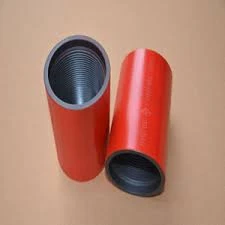- Afrikaans
- Albanian
- Amharic
- Arabic
- Armenian
- Azerbaijani
- Basque
- Belarusian
- Bengali
- Bosnian
- Bulgarian
- Catalan
- Cebuano
- Corsican
- Croatian
- Czech
- Danish
- Dutch
- English
- Esperanto
- Estonian
- Finnish
- French
- Frisian
- Galician
- Georgian
- German
- Greek
- Gujarati
- Haitian Creole
- hausa
- hawaiian
- Hebrew
- Hindi
- Miao
- Hungarian
- Icelandic
- igbo
- Indonesian
- irish
- Italian
- Japanese
- Javanese
- Kannada
- kazakh
- Khmer
- Rwandese
- Korean
- Kurdish
- Kyrgyz
- Lao
- Latin
- Latvian
- Lithuanian
- Luxembourgish
- Macedonian
- Malgashi
- Malay
- Malayalam
- Maltese
- Maori
- Marathi
- Mongolian
- Myanmar
- Nepali
- Norwegian
- Norwegian
- Occitan
- Pashto
- Persian
- Polish
- Portuguese
- Punjabi
- Romanian
- Russian
- Samoan
- Scottish Gaelic
- Serbian
- Sesotho
- Shona
- Sindhi
- Sinhala
- Slovak
- Slovenian
- Somali
- Spanish
- Sundanese
- Swahili
- Swedish
- Tagalog
- Tajik
- Tamil
- Tatar
- Telugu
- Thai
- Turkish
- Turkmen
- Ukrainian
- Urdu
- Uighur
- Uzbek
- Vietnamese
- Welsh
- Bantu
- Yiddish
- Yoruba
- Zulu
Exploring Different Types of Casing and Tubing Connections in Oil and Gas Industry
Casing and Tubing Connections An Overview
In the world of oil and gas extraction, the integrity and efficiency of the wellbore are critical. Casing and tubing connections are essential components that play a pivotal role in maintaining the stability and productivity of wells. This article delves into the significance of these connections, their various types, and best practices for ensuring their reliability.
Understanding Casing and Tubing
Casing refers to the steel pipes installed in the wellbore after drilling. Its primary purpose is to stabilize the geology surrounding the well and prevent any collapse, while also protecting the groundwater from contamination. Casing is typically set in several sections, each tailored to specific depths and geological conditions.
Tubing, on the other hand, is the pipe through which oil and gas flow to the surface after extraction. Unlike casing, which is cemented in place, tubing can be removed for maintenance or replacement.
Both casing and tubing must be connected securely to withstand the harsh conditions of well operations, including high pressures, variable temperatures, and corrosive fluids.
Types of Connections
Casing and tubing connections come in various designs, each tailored to specific well requirements. The most commonly used types include
1. Threaded Connections These are the simplest kind of connection, where the ends of the pipes are machined to form threads that fit together. While threaded joints allow for quick assembly and disassembly, they are susceptible to galling and can leak if not adequately made up.
2. Welded Connections In this type, sections of casing or tubing are welded together, creating a strong and continuous pipe. This method is highly reliable but is more time-consuming and requires careful handling to prevent weld failures.
3. Premium Connections These specialized connections are designed to withstand high pressures and corrosive environments, often used in deep or challenging wells. Premium connections feature advanced sealing mechanisms and better stress distribution, thus reducing the chances of failure.
casing and tubing connections

4. Non-Threaded Connections These involve using specialized mechanical joints that don’t require traditional threading. They often utilize a slip joint or a locking mechanism for superior sealing and are less prone to leaks.
Best Practices for Connections
To ensure the integrity and safety of casing and tubing connections, it is essential to follow industry best practices
1. Proper Selection Choosing the appropriate type of connection based on the geology of the well and the expected production rates is crucial. Factors such as the presence of corrosive substances or extreme pressures must influence this decision.
2. Quality Control Implementing strict quality control measures during the manufacturing and installation of casing and tubing can prevent potential failures. This includes thorough inspections of joints and connections using technologies like ultrasonic testing.
3. Correct Installation Proper assembly techniques are vital to avoid issues such as leaks or failures. Following manufacturer specifications for torque and makeup procedures ensures that connections are secured adequately.
4. Regular Maintenance and Inspection Routine checks can identify signs of wear, corrosion, or other potential issues before they lead to significant problems. Technologies such as downhole cameras and pressure testing can assist in these evaluations.
5. Training and Certification Ensuring that personnel involved in the installation and maintenance of casing and tubing are adequately trained and certified helps maintain high safety and quality standards.
Conclusion
Casing and tubing connections are foundational elements in the oil and gas industry, directly impacting the efficiency and safety of well operations. A thorough understanding of their types, proper selection and installation practices, and ongoing maintenance are essential for maximized performance. As exploration and extraction technologies continue to evolve, the importance of reliable casing and tubing connections cannot be overstated, driving both economic and environmental success in resource extraction.
-
Tubing Pup Joints: Essential Components for Oil and Gas OperationsNewsJul.10,2025
-
Pup Joints: Essential Components for Reliable Drilling OperationsNewsJul.10,2025
-
Pipe Couplings: Connecting Your World EfficientlyNewsJul.10,2025
-
Mastering Oilfield Operations with Quality Tubing and CasingNewsJul.10,2025
-
High-Quality Casing Couplings for Every NeedNewsJul.10,2025
-
Boost Your Drilling Efficiency with Premium Crossover Tools & Seating NipplesNewsJul.10,2025







